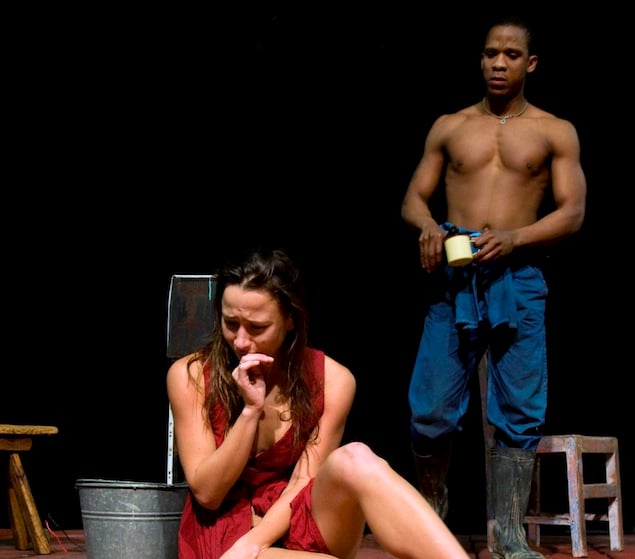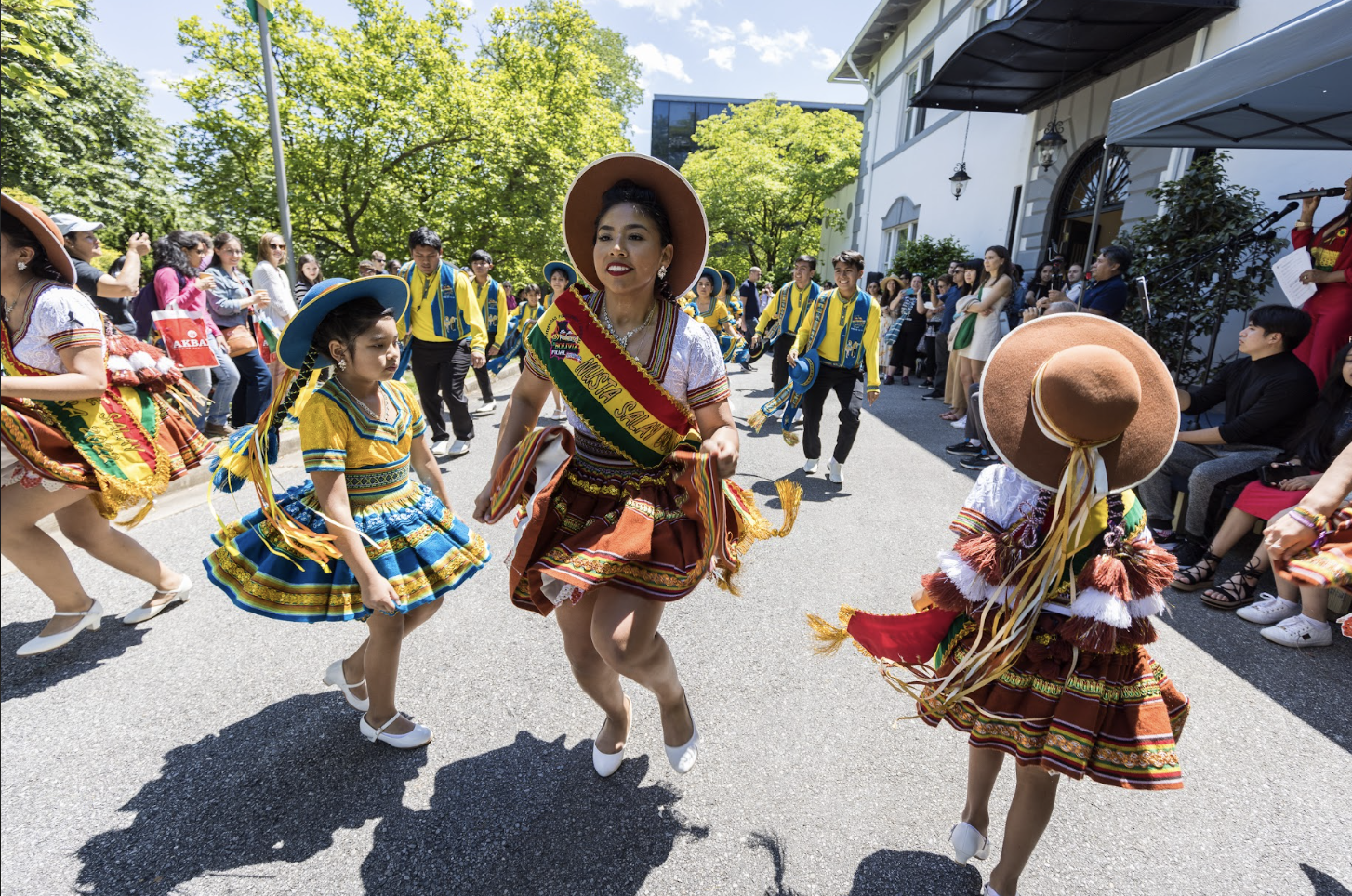
Mies Julie, currently playing in its Washington premiere at Shakespeare Theatre, packs so much heat, longing, conflict, and cruelty into its brief 90-minute running time that it’s a miracle the stage doesn’t implode under the weight of all that energy. Written and directed by Yael Farber (and feted nonstop since it debuted at the Edinburgh Fringe in 2012), the production by Cape Town’s Baxter Theatre Center and the South African State Theatre takes August Strindberg’s Miss Julie and pokes it with a cattle prod until it’s raw, leaving a festering brew of hate, heritage, desire, and shame in its wake.
While Strindberg’s 1888 play tackled the intersection of gender, power, and social status, Farber adds another toxic ingredient to the mix: race. Mies Julie is set on a farm in post-apartheid South Africa where Julie (Hilda Cronje) lives with her father on land seized centuries ago. She spars with John (Bongile Mantsai), her father’s servant, whose mother, Christine (Thoko Ntshinga), helped raise Julie as a child. In Strindberg’s play the characters of Christine and John were engaged to be married rather than mother and son; by making Christine the matriarch Farber confronts the idea of ancestors in a more immediate way, and gives John and Julie a shared childhood that makes them feel a little more like equals.
Cronje’s Julie and Mantsai’s John share an aggressively sexual physicality from the moment they saunter onstage: She combines the poise of a dancer with an almost comic animalism, wielding her crotch like a weapon (or a rhesus monkey). But if her body language is unsubtle, her eyes are much more complex. As Julie tells John how her father would read her bedtime stories about shooting any black man who’d dare to touch her, before demanding haughtily that he kiss her feet, her face hints at the turbulence below her vicious affect.
Mantsai also moves like a dancer, leaping across the stage, onto chairs, and over tables like a cat. His chemistry with Cronje is so electric that it complicates the action even further—unlike Strindberg, Farber has the two consummate their enormously complicated relationship onstage, furiously and without sentiment. Afterward, the “beautiful and cruel” Julie is rendered vulnerable for the first time, and John becomes the dominant character, at least momentarily. The action is accompanied by an atonal, otherworldly score performed onstage by musicians Matthew and Daniel Pencer, who heighten the intensity with a bass so booming it sounds at one point like a train is about to pass through the theater.
While the performances are heartbreakingly real, the presence of ghosts underneath the earth is manifested by Tandiwe Nofirst Lungisa, an actor and musician who appears first as an ancestor who frightens Christine before sitting downstage to play an instrument crafted from a petrol drum. Patrick Curtis’s set consists of layers of earth covered with a red tile floor, beneath which generations of bodies, suffering, and recrimination are buried. The land Julie and John argue over is both a physical presence and an intangible idea, representing the oppression, repression, desire, and hate both characters fall victim to. “Love is not possible in this mess,” says John, accurately, in one of the couple’s frantic oscillations between attraction and repulsion. To love means to give something up, and in this wilderness of empathy, there isn’t enough left to make it worthwhile.
Mies Julie is at Shakespeare Theatre’s Lansburgh Theatre through November 24. Running time is 90 minutes, with no intermission. The show contains violence and scenes of a strong sexual nature. Tickets ($45 to $60) are available via Shakespeare’s website.


















